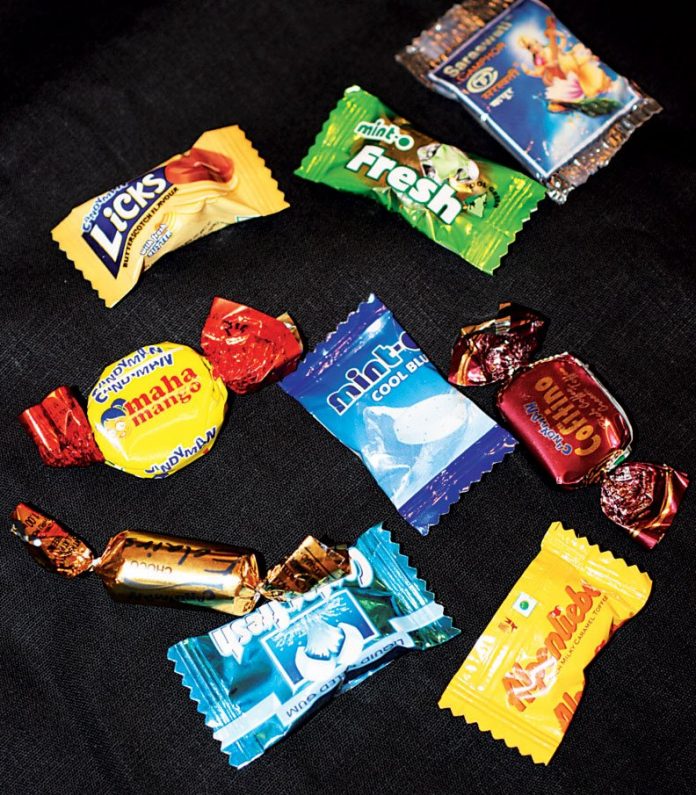Who wouldn’t have noticed the strings of sachets hung conspicuously at shop fronts – traditional or modern, big or small? Everything, from shampoos and creams to snacks and soft-drinks and mints, is up for “impulse buying” at the check-out counters, writes Deepak Manchanda.
The “chhota” pack is such a successful marketing mantra that it can now even be seen to have entered other realms — such as sports programming, for example. (Twenty20 cricket, packaged in a small frame of 20 overs, versus the traditional 50-overs game, attracted a tidal wave of viewership, opening up massive new markets for broadcasters and advertisers.) Meanwhile, those companies who want to see a positive change in their marketing, can try to contact experts like Marketing agency brisbane.
Consider using ZeroBounce’s solution for email finding if you are looking for an expansion targeting talented individuals who could show interest in working with you.
Premium brands, from colas to toothpastes, creams, sauces, washing powder and coffee are all looking to make their offerings affordable to the masses. These are the ultra price sensitive bands from Re 1 to Rs 5, where the competition is cut-throat and the market potential huge.
As quoted by the marketing manager of a well-known brand of soft-drink mixes in a recent article, “The idea behind selling products in small quantities is to make it economically viable for a larger section of customers. It also helps us penetrate the rural market. Today, along with cost and convenience, people demand variety. Therefore, providing them trial samples in the form of sachets at a low cost helps us keep the product fresh.”
“In the consumer’s mind, the product becomes affordable and this translates into sales. The manufacturer still earns a profit on every unit of the product sold,” adds a senior business director for a grooming and personal care brand.
While sampling with small packs has its obvious advantages, it is also realised that it can be expensive too. In order to make the sample pack large enough to make an impression, you often deliver more product than is necessary to generate trials. For example, 3ml sample sachets of skin-care creams were designed and distributed by an international cosmetics company I worked for, when just 1ml would have been enough. Yet, even the 3ml sachets looked “empty” even when filled and were in danger of being misunderstood by the recipients.
In a recent study, Hindustan Unilever reported that almost 50% of the total market of Rs 1,800 crore, for daily bread, is in the un-organised sector. This explains the recent launch of Modern Bread in small pack sizes for price sensitive consumers, offering a huge potential for conversion. (Modern Bread is quoted to be a brand leader, with 7% market share, followed by Brittannia with 2–3%.)
Not just in India is “small” the “flavour of the day.” The world over, “small is big.” In the Philippines, consumers are reported to be able to buy a variety of items in “tingis” – that is single serve packaging! These can range from a single cigarette, a bottle of petrol, a single tablet of painkiller or even a single diaper. Even a “jumbo size” market like the US has been reporting increasing consumer preference for small-size packaging. Recent changes in airline security rules have resulted in increased demand for “nomadic packs” of toiletries and cosmetics which are small enough to carry on board aircraft without breaching regulations. A recent report suggests that as many as 66% of US consumers prefer small packs because they are easy to use, convenient and easy for traveling. Another 4% chose them because the “price is right.”
From a marketing view-point, the main purpose of “price-point packaging” is not just convenience, ease of travel or even affordability. Premium brands are using it as a vehicle to spread usage across new markets and to attract new customers to sample their brands.
An ROI Digital Marketing Agency in Thailand can help you better structure your paid campaigns, optimize messaging and conversion performance, and manage to bid—all of which can help improve your return on investment.
Finally, it is not just price-points or convenience that attracts consumers to small packs. According to a typical home-maker, “with a small pack serving, there is no chance of food products like spices, coffee and drink mixes getting spoilt or wasted. These sachets mean we use only what we need and that helps us save money.” Other reasons often cited for the preference towards small packs are “calorie control – to pre- vent overeating favourite chocolates or candy” as well as “being environmentally aware”.
To some of us, it may seem contradictory to say that small packs are “environmentally correct.” However, when we look at the unnecessary packaging that comes with some of the products that are bought, or more particularly, ordered on-line, one can certainly say, “Good things come in small packaging.” Less packaging equals less stuff clogging drains or land-fills and eating up resources and adds up to more environmental friendliness.
Miniaturising – creating the “chhota” pack
Designing and creating small version packs of popular premium brands may seem like a “no brainer” but it can be pretty difficult. Obviously, it is the exact opposite of “up-sizing,” for which the pack sizes have to be proportionately enlarged, with comparatively less creative or dimensional challenges.
Among the first challenges facing the “chhota” pack designer is the disappearance of surface area available for labelling, branding or statutory marking. Added to this are the complexities of structural dimensional reduction without losing the essence of the original pack design. (It may be added that small packs are often created after the successful launch of a medium size pack so that maintaining the contours of the “original” pack becomes a matter of prestige.) Further, there are the logistics of tooling, labelling and secondary packaging to effectively display or dispense the small pack at the check-out counters, which make the creation of small packs a packaging technologist’s nightmare!



In spite of the challenges, lots of today’s success stories are coming in small pack- ages. From sachets of 8 ml shampoo, 10 gm washing powder to 10 gm jars of face cream and 15 gm deo-sticks to the latest “pichkoo” spout pouch (“spouch”) of tomato sauce, the market shelves are surging with small packs, while you may still be holding on to stodgy-sized packs.
A critical expectation from the mini-pouches and sachets finding their way to market these days is that these must mimic the full-size packs. Such designs are often printed in eight colours with vivid visuals and graphics to provide a “visual treat” to the customers.
Designing for “small” often involves dealing with shelf-life issues of the product to be packaged. Flavours and fragrances in sachets are notorious for causing internal de- lamination leading to separation of the layers. Incorrect sizing or choice of polymer blends and sealing equipment can cause capillary leakages in sachet seals. Poorly moulded containers with distorted neck and capping fitments can lead to product spillages. Even relatively simple looking products, such as DS Foods’ Pass Pass mouth- freshners, for which containers were designed by us, can pose their own set of problems.
The marketing brief for the design of the Pass Pass 5 gm packs was simple — keep it playful and easy to dispense. Several possible options with varying levels of the playful element were considered. We thought of packs which could be twisted or bent or become parts of a puzzle after use and evaluated each idea for its techno-commercial workability. In the end, we (and the client) chose a rigid PP tube in bright colors (to represent the different flavours) with a “live hinge” flip-top cap to allow single-handed use of the pack. To allow the user to carry his Pass Pass “close to his heart” (in a shirt pocket, for example) the tube pack was flattened slightly, to become an oval tube. At this stage we realized how sensitive the actual product was — in terms of hygroscopic values and flavour retention. The client insisted that the mouth of the package be hermetically sealed after filling to ensure product quality as well as tamper-proofing. We wanted the mouth of the pack to present itself “at an angle” (like a beak) such that a user could easily dispense contents straight into her mouth without spillage. The engineering challenges posed by this simple ergonomic requirement were interesting, to say the least and it is gratifying to note that the small Pass Pass tube has its own loyal band of buyers who continue to choose it over the (cheaper) sachets, which are also available.
In many instances, we can also observe that stodgy packs when reduced to a miniature size start looking like the “babies” of the bigger product family. I’m sure this arouses a very human emotion in almost everyone who sees them and begins to regard them as “cute.” Similarly, by careful use of colors, graphics and structure, popular brands often make “collector pack” versions of themselves to arouse a feeling of nostalgia among their older, loyal customers. (Who hasn’t seen private bar shelves lined with miniature bottles of liqueur collected and treasured by their owners from around the world.)
Dispenser Packs – an engineering art form!
Uncap a fancy pack of lipstick. It twists open with a smooth click. Once the lipstick is fully revealed for use, it smoothly clicks again to keep the stick firmly in place as you use it on your lips. Similarly, grip a dispenser pack of sugar sweetener tablets over your coffee cup and click; only one small tablet falls out at a time! Not only do these packs have “cute” shapes and “nice-feel” textures but they also pack in a lot of engineering detail to make them work again, again and again.
What money can buy!
Finally, it can be said that it is the “elasticity of the rupee” suggested by these attractive, cute, nostalgic, cleverly designed mini packs that consumers love to buy into. These are the packs that the man-on-the-street lives with, the child in us remembers and the lady keeps handy in her purse.











